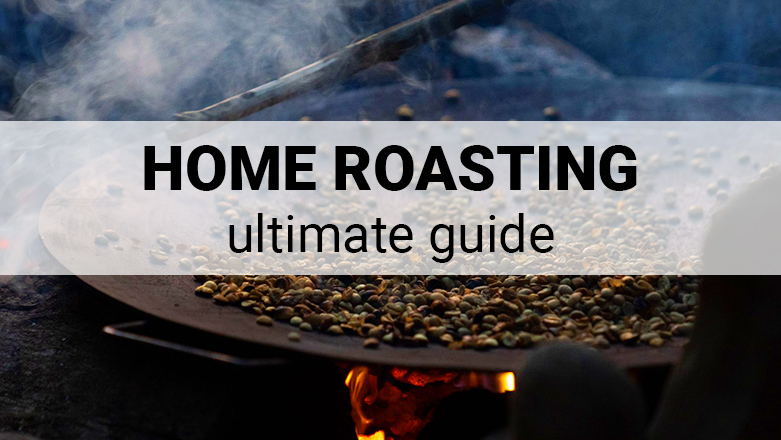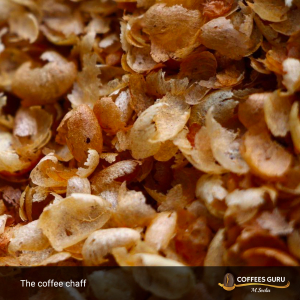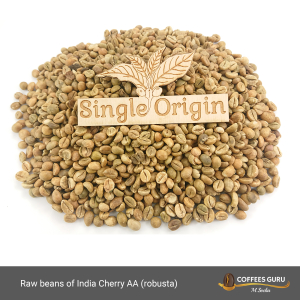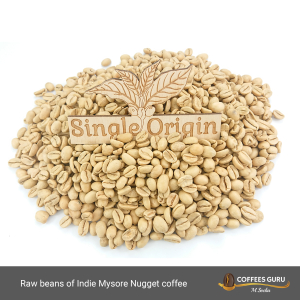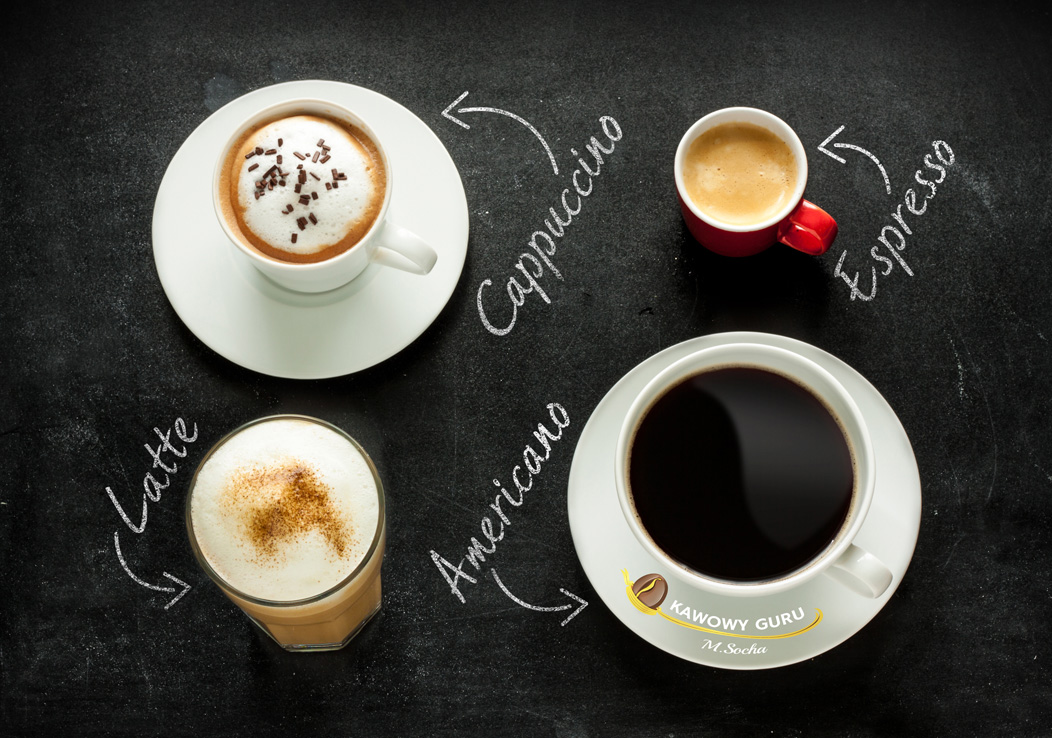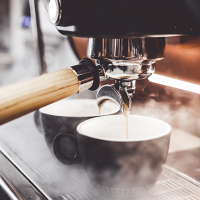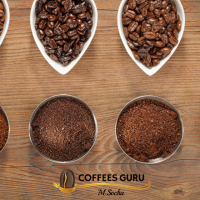I have previously written about green coffee in the context of its alleged weight-loss properties and my opinion on the matter. As you know, I have been and still am a staunch opponent of attributing any health benefits to raw coffee beans that roasted coffee does not possess. Therefore, we have not offered you raw coffee in Single Origin until now.
In recent times, home roasting has become increasingly popular – the art of roasting coffee in the comfort of your own home. But you can’t roast coffee if you don’t have… green coffee beans.
With this article, I want to announce the retail sale of green coffee in Single Origin and provide you with some insights into the subject that I have been passionate about since 2009. I will also share some tips that will undoubtedly help you avoid many mistakes and disappointments, saving you a lot of nerves and money.
Why shouldn’t you roast coffee at home?
I’ll start with a somewhat unconventional question to outline all the negative aspects of home roasting from the very beginning. There aren’t many, but they can influence your decisions:
-
An ocean of aromas – home roasting releases a plethora of odors throughout your home, which can linger for several days. I personally love this aroma, but as they say, tastes differ. The less professional the roasting process (e.g., using a pan), the more aroma is released.
-
Coffee Chaff – when roasting coffee, the silverskin, a thin membrane, detaches from the beans and tends to float around; it is highly flammable. Professional coffee roasters have special containers for it, but at home, it’s likely to float around your kitchen, and you’ll need to figure out how to deal with it.
-
Unbearable Odor If You Overroast – the roasting process requires constant monitoring and active participation (stirring). If something distracts you and you overroast the beans, it’s challenging to get rid of the horrible smell of burnt coffee in your home. It’s truly unpleasant and has nothing to do with the wonderful aromas released during proper roasting.
-
Results May Not Meet Expectations – this is the most common issue I encounter when talking to people who practice home roasting. Don’t let this discourage you, but be aware that it’s challenging to achieve the same results as professional coffee roasters or the tools we use every day in the roastery.
-
Temperature Risks – coffee roasting is inherently associated with high temperatures (around 200°C) and materials that cool relatively slowly (the beans). This always carries the risk of burns or even fires, so it must be done consciously.
-
Technical Requirements – while a pan doesn’t require much, home coffee roasting devices may sometimes need exhaust ventilation and/or 380V three-phase power supply instead of the standard 230V electrical outlets.
So, let’s roast! But where can you get green coffee?
Subjectively (but also objectively) – from the Single Origin Roastery, where, as mentioned earlier, we have started selling green coffee, raw, unroasted beans from around the world.
Objectively, buying green coffee online is possible, but most of the time, it is labeled only with generic information like “Arabica from Brazil,” without specific details, parameters, or harvest dates. Often, raw beans can have distorted moisture content due to washing or other preparation processes that define them as “for consumption.”
They may also be old or improperly stored warehouse leftovers that no roastery wants to buy, and various amateur sellers attempt to market them differently.
On the other hand, reputable European importers and distributors of green beans, from whom we purchase fresh harvests, usually require pallet-sized quantities or at least sacks of 60-70kg.
At Single Origin, you can buy as little as 500g of selected raw beans, ensuring that you receive our quality (because we offer you the exact same beans that we roast for you every day).
What green coffee beans should you choose for Home Roasting?
The answer is simple for beginners – the cheapest ones. Your initial attempts are unlikely to yield excellent results, and there is a high probability that you will use this coffee more as a mosquito repellent than for your espresso. The cheapest option in terms of green beans is Indian robusta (or Brazilian Santos if you want to start with arabica right away – which I suggest, as it has a significantly milder and more pleasant aroma during roasting than robusta).
Once you determine that your roasting skills allow you to produce coffee that you enjoy drinking, you can choose beans more consciously for specific purposes.
The choice of beans based on their aromatic and flavor profile is up to you. You can read about the characteristics of individual beans in the descriptions on SingleOrigin.pl. Below, as a reminder, are some aspects (in a very generalized form with many exceptions) that influence the “natural” properties of beans, independent of their roasting:
-
Terroir – the soil, climate, and surroundings, i.e., the region of origin! African coffees usually have a slightly drier profile, with more citrus acidity, and are often used for lighter roasts. American coffees are more likely to resemble the classic coffee flavor and are easier to roast (more on this below).
-
Processing method – dry-processed (natural) coffees tend to have lower acidity, heavier body, and more fruit notes in the aftertaste, which can be a bit “dirty.” Wet-processed (washed) coffees generally have more acidity, but their profile is typically nobler and richer than dry-processed ones.
-
Altitude of cultivation – the higher, the better, starting from 1200 meters above sea level. We begin discussing SHG (Strictly High Grown) when we talk about coffees at these elevations.
In addition to the above, I would add one more criterion, keeping in mind the topic of this article – ease of roasting. How do I understand this?
There are beans that require a lot of attention and are very sensitive to even the slightest temperature anomalies and roasting errors. These beans may have an uneven structure and/or moisture content, resulting in uneven roasting (here, Ethiopian Yirgacheffe and various African naturals are at the forefront).
On the other hand, there are beans on the opposite end of the scale – those that roast easily and pleasantly, do not generate problems, roast evenly, and can forgive mistakes, shortcomings, or equipment deficiencies. These are the beans I recommend for home roasting, as they will provide you with a greater sense of satisfaction when experimenting with beans that are more cooperative. In my opinion, in home conditions, Colombian Supremo, Dominican Ocoa, and Nicaragua Finca el Limoncillo from the Single Origin offer the best results.
Of course, I encourage you to verify this proposition through sensory evaluation and try different beans. However, it’s worth keeping in mind not to get discouraged by a series of unsuccessful roasts – there are beans that are challenging to roast correctly even in a professional roastery.
Equipment for Home Roasting – What to Use for Roasting Coffee?
In Vietnam or Africa, coffee is still roasted on plates over an open fire, which makes sense in those settings. However, you probably prefer other methods, so I will briefly describe the potential advantages and disadvantages of each method of home roasting.
I strongly advise against using an oven for roasting coffee for two main reasons:
-
During coffee roasting, you need to regularly and constantly stir the coffee, which will be very challenging in an oven without destabilizing the temperature (which will adversely affect the coffee).
-
During coffee roasting, coffee chaff (the thin, dry skin) detaches from the beans, and it will be challenging to remove it from the oven (it must be removed because it can even catch fire).
A frying pan can be a great option for beginners or for fun experiments with friends, although dealing with the chaff it produces can be problematic – it will definitely float around your kitchen. In this version, your home will undoubtedly smell the most like roasted coffee.
Use thick and heavy pans with high sides for roasting. You need to heat it to about 200°C and position the heat source so that the temperature remains relatively stable throughout the roasting process (a thermometer is highly recommended). Then, spread a thin layer of beans (to avoid creating layers) so that each bean has contact with the bottom of the pan. Stir regularly! After a few minutes, you will start to smell the roasted beans, and after another 2-3 minutes, the beans will start releasing chaff.
Around 15-18 minutes after the start of roasting, you will hear a distinctive cracking sound – the first crack, an internal explosion of the bean caused by the increasing pressure inside generated by the water vapor. During the first crack, the beans significantly increase in volume (sometimes doubling), and magical processes begin that largely define the future flavor in your cup (caramelization of carbohydrates, the formation of aldehydes, simple sugars, melanoids, etc.).
Now is the time for the main part of the experiment because these few moments from the first crack to the end of roasting will determine the flavor of your coffee. There is no set time here – simply observe the color of the beans and decide when you think the color is most suitable, bearing in mind that the beans will continue to roast for several seconds after you remove them from the pan due to accumulated heat, so they will darken slightly.
It’s essential to cool the beans to room temperature as quickly as possible after roasting. A stainless steel kitchen colander works well for this purpose, but you must continuously move the beans with it for a few minutes – remember that these beans are around 200°C. That’s really hot and can cause burns or even ignite if left uncooled in a pile.
A thicker metal sheet (at least 0.5mm) over an open flame may be a better alternative to a pan, and it certainly has more entertainment potential. It’s better because it eliminates the two main problems of strictly home roasting:
- The odors disperse into the fresh air, not throughout your home.
- You can easily blow away the chaff that is produced, and it doesn’t cause any other cleaning or fire hazards.
The issue with an open flame is the fluctuating temperature, but at the scale we’re discussing, you can address it with more frequent and intensive stirring – it’s achievable, and the memories of roasting coffee over an open flame will be priceless. It’s a good idea to prepare a metal tool to collect the beans from the sheet and a container in which you can cool the beans.
You can certainly use any sheet over an open flame, and your imagination is your only limit.
A popcorn machine may seem like a good idea at first glance, and I’ve seen videos showing successful coffee roasting at home with such machines. However, I see problems. Firstly, popcorn kernels are much smaller, lighter, and more round than coffee beans, so the thermal efficiency of such machines may not be sufficient. Additionally, they may not handle the mixing of coffee as well as popcorn.
Secondly, the roasting time for popcorn is shorter, and prolonged exposure to high temperatures beyond what the manufacturer intended can, in the best case, damage the machine (and in the worst case, lead to an electrical short or user burns).
Finally, if you have a slightly larger budget for home roasting, you can purchase a dedicated coffee roaster. These devices can be divided into three groups:
-
The cheapest, anonymous devices from China in the range of 300-1000 PLN. I strongly discourage them in every aspect; it’s not worth the money, and you risk your health and home electrical installation.
-
Budget roasters from more recognized manufacturers (Hario, IKAWA, Kaffelogic, Behmor, Gene) – they cost around 1500 – 5000 PLN and typically offer basic functionalities such as temperature control, autonomous and continuous stirring of roasted beans, and the removal and collection of chaff, allowing you to roast several hundred grams of coffee at once.
-
Professional micro-scale coffee roasting devices, usually intended for conducting trial roasts and building roasting profiles by professional roasters. Prices for basic electric devices start at a few thousand PLN (e.g., Aillio Bullet), and there’s no upper limit. Virtually all recognized coffee roaster manufacturers offer sampler versions (with a capacity below 1kg of beans) for roasting samples, but they usually require technical installations for exhaust ventilation, gas supply, or 3-phase power supply. They also take up more space than the devices described in point 2. However, they provide greater control over the roasting process and its parameters, with the option to connect to a computer and control the roasting process using dedicated roasting software.
Is it worth roasting coffee at home – by yourself?
In my opinion – yes and no.
If you have high standards for your coffee and a discerning palate, it’s unlikely that you will be able to roast coffee at home as we do in a professional roastery, especially for lighter roasts or more demanding beans.
On the other hand, home roasting can bring you a lot of joy and be a spectacular addition to family or friends’ gatherings. It can also significantly reduce the cost of the coffee you consume if the taste is acceptable.
My advice is to give it a try and form your own opinion. Even if you don’t succeed, you will be richer and wiser for the experience! And there’s nothing stopping you from regularly purchasing coffee roasted by professionals while treating home roasting as a weekend hobby.
Please remember to prioritize safety – 200°C is no joke, and a moment of distraction can lead to harm and significant damage. Roast responsibly!


